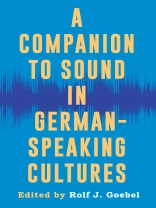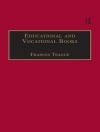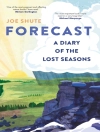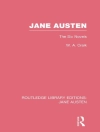Explores sonic events and auditory experiences in German-speaking contexts from the Middle Ages to the digital age, opening up new understandings .
As a sub-discipline of cultural studies, sound studies is a firmly established field of inquiry, examining how sonic events and auditory experiences unfold in culturally and historically contingent life situations.
Responding to new questions in sound studies in the context of German-speaking cultures, and incorporating up-to-date methodologies, this
Companion explores the significance of sound from the Middle Ages and the classical-romantic period through high-capitalist industrial modernity, the Nazi period and the Holocaust, and postwar Germany to the present digital age. The volume examines how sonic events are represented in literary fiction, radio productions, cinema, newsreels, documentaries, sound art, museum exhibitions, and other media, drawing for this inquiry on philosophy, aesthetics, literary criticism, musicology, art theory, and cultural studies. Each essay is a case study — of persons, events, and sonic, visual, or textual artifacts — situating them in wider contexts of culture, history, and politics. The volume not only revisits well-known topics from new angles, but seeks especially to explore neglected issues on the cultural periphery. It assembles original essays by leaders in the field and emerging scholars from the United States and Europe. Offering an advanced introduction to the topic, the
Companion is addressed to anyone interested in how the analysis of sound phenomena opens up new understandings of German-speaking cultures.
Содержание
List of Illustrations
Preface
Introduction
Rolf J. Goebel
Part I. Sonic Practices from the Middle Ages to the Nineteenth Century
1: Soundscapes in Medieval German Literature
Albrecht Classen
2: A German Dance: Music, Mesmerism, and the Glass Armonica
Lawrence Kramer
3: Healthy Throats, German Sounds: Women’s Vocal Development and Expertise in German Soundscapes of the Long Nineteenth Century
Josephine Hoegaerts
Part II. Rediscovering the Sounds of Modernism
4: Heidegger: A Little Hint on How to Listen
James M. Kopf
5: New Hearing: Soundscapes of Literary Modernism
Frieder von Ammon
6: Tragic Silence and Heroic Clamor: Sound Worlds and Constructed Ethnographies in Fritz Lang’s
Die Nibelungen (1924)
Daniel Sherer
Part III. Listening to the Unbearable: The Sounds of National Socialism and the Holocaust
7: Hitler’s Voice: Media and Politics of Embodiment
Tyler Whitney
8: ‘The whole language was a scream’: The German Language During the Seizure of the Jews
Sara Ann Sewell
Part IV. After the Catastrophe: Sounds in Postwar Germany and Beyond
9: Revisiting the Soundscapes of Postwar West German Radio Drama
Caroline A. Kita
10: Jazz and Its Effect on Politics and Modernity as Presented in German Newsreels and Documentaries of the 1960s
Sigrun Lehnert
11: On the Air: Clandestine Radiophonic Protest Groups in Italy, Switzerland, and Germany, 1976-77
Anna Bromley
12: Kittler’s Sound
Larson Powell
13: Clearing the Throat, Stumbling, and Coughing: An Anthropology of the Sonic Corpus According to Carlfriedrich Claus
Holger Schulze
Part V. Sounds of the Present
14: Carsten Nicolai’s Art of Disturbance: Sound, Science, and Interference
Lutz Koepnick
15: Echoes of the Past: Sound in the History Museum
Daniel Morat
16: (Post)Digital Sounds: Acoustic Experiments in the Age of Algorithmic Processes
Christiane Heibach
Part Vi. Epilogue
17: The Sound of Pine Needles Falling: The Art of Max Neuhaus
Yehuda Safran
Select Bibliography and List of Further Reading
Notes on the Contributors
Index
Об авторе
Larson Powell is Curator’s Professor of Film Studies at University of Missouri, Kansas City.












